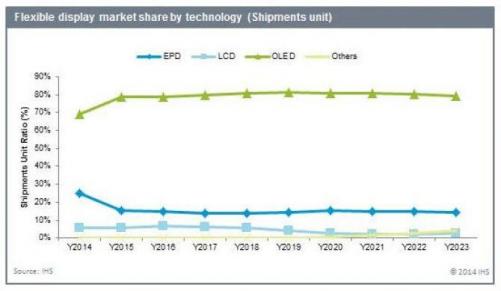IHS sees the flexible OLED market growing at a CAGR of 44% from 2014 to 2024
IHS says that flexible displays are an "increasingly important segment of overall display market revenues", and by 2024 flexible displays (mostly OLEDs) will grab 15% of the total flat panel display market.
Flexible display production will grow at a compound annual growth rate (CAGR) of 44% from 2014 - to reach $23 billion in 2024. The growth may actually accelerate when display makers start to produce rollable, foldable and stretchable panels and devices.













